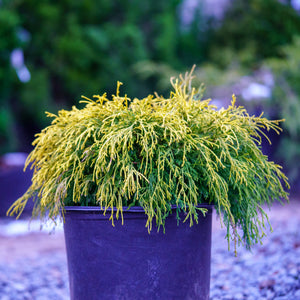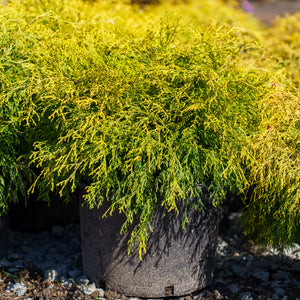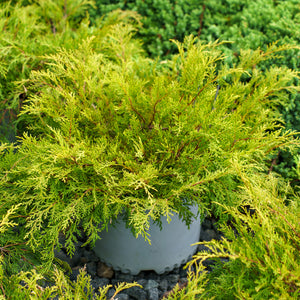The Cypress Guide
Cypress, also known as Cupressus, are a group of evergreen conifers that offer a range of unique qualities and applications in the landscape. With their distinctive, upright form, rich foliage, and resistance to pests and diseases, cypress trees are a popular choice for homeowners and landscapers alike. Whether you're looking to create a natural privacy screen, add texture to a garden bed, or simply enjoy the beauty of these majestic trees, cypress are an excellent choice that can enhance the beauty and functionality of any outdoor space.

About
Cypress are members of the Cupressaceae family, which includes several species of evergreen trees and shrubs that are found all over the world. They are highly valued for their ornamental value and have been used in landscaping for centuries. The most common species of cypress include the Monterey cypress, Leyland cypress, Italian cypress, and Arizona cypress.
Cypress have a distinct appearance with scaly, peeling bark that ranges in color from reddish-brown to grayish-brown. They have needle-like leaves that grow in either feathery or flattened sprays, depending on the species. Cypress produce small, round cones that are often covered in a waxy coating. These cones contain seeds that are an important food source for birds and other wildlife.
Cypress are adaptable to a range of soil types and growing conditions, although they prefer well-drained soil and full sun exposure. They are known for their resilience and can tolerate extreme heat and drought conditions, as well as salty coastal environments. Cypress are relatively low-maintenance, but they may require occasional pruning to remove dead or damaged branches and promote healthy growth.
In addition to their ornamental value, cypress have a long history of practical uses. Cypress wood is highly prized for its durability and resistance to decay, and has been used for a variety of purposes such as building homes, boats, and furniture. Cypress also produce an essential oil that is used in perfumes, soaps, and other cosmetics.
In landscaping, cypress are often used as specimen trees or to create a natural privacy screen or windbreak. Their tall, narrow form and evergreen foliage make them a popular choice for formal gardens and landscapes, as well as coastal environments. With proper care and maintenance, cypress can provide years of enjoyment and add timeless beauty to any outdoor space.
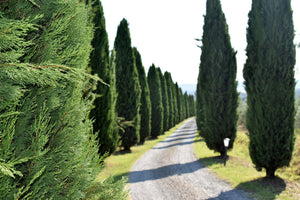
Planting
Cypress have specific planting and care requirements to ensure their successful establishment and growth. Here are some general guidelines for planting and caring for cypress:
Soil: Cypress thrive in well-draining soil that's conducive to their growth. They typically prefer soil that is slightly acidic and well-aerated. Before planting, prepare the site by loosening the soil and, if necessary, incorporate organic matter to improve drainage and fertility.
Sunlight: Cypress generally thrive in full sun but can tolerate partial shade. It's best to choose a planting location that receives a minimum of six hours of direct sunlight daily. In regions with intense sunlight and heat, cypress may benefit from some shade during the hottest parts of the day.
Watering: Adequate and timely watering is vital for the initial establishment of cypress. Right after planting, provide a deep watering to help the tree settle into its new environment. Throughout the first year, continue to offer regular irrigation. Water deeply and thoroughly once or twice a week, adjusting based on local rainfall and soil moisture levels. Be careful not to overwater, as this can lead to root problems, including rot.
Mulching: Applying a layer of organic mulch around the base of your cypress is beneficial. This practice helps retain soil moisture, suppress weed growth, and regulate soil temperature. Suitable mulch materials include wood chips, bark, or compost. Maintain the mulch a few inches away from the tree trunk to prevent excess moisture accumulation.
Pruning: Cypress typically require minimal pruning. Focus on removing any dead, damaged, or overlapping branches to maintain a healthy and balanced tree structure. Pruning should be conducted during late winter or early spring when the tree is dormant, ideally before new growth begins.
By following these fundamental planting and care instructions, you can ensure that your cypress establish themselves successfully, ensuring their healthy growth and adding beauty to your landscape for years to come.
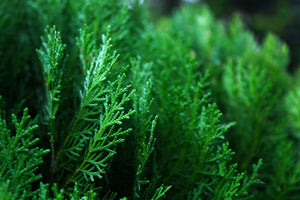
Care
Cypress, like many other tree species, have specific care requirements to ensure their optimal growth and long-term health. Here are some general guidelines for caring for cypress:
Watering: Cypress require consistent and appropriate watering to thrive. During the growing season, aim to provide adequate moisture, adjusting your watering schedule based on local rainfall and weather conditions. It's crucial to water deeply and thoroughly to encourage deep root growth. Shallow watering should be avoided, as it can lead to surface root development and make the tree more susceptible to stress during periods of drought or high temperatures. In hot and dry climates, you may need to increase your watering frequency to maintain optimal soil moisture levels.
Pruning: Pruning your cypress is essential for maintaining their overall health and shape. While cypress typically require minimal pruning, it's advisable to remove any dead, damaged, or diseased branches. Additionally, you can shape the tree to achieve your desired size and form. The best time for pruning is during late winter or early spring when the tree is dormant. Always use clean and sharp pruning tools to minimize the risk of causing harm to the tree.
Fertilizing: Providing the right nutrients is crucial for the healthy growth of a cypress. Apply a balanced, slow-release fertilizer in the spring or early summer, following the manufacturer's recommended application rates and timing. It's important to avoid over-fertilizing, as excessive fertilizer can damage the tree's roots. When in doubt, err on the side of using less fertilizer rather than excess.
Soil and Sunlight: Cypress typically thrive in well-drained soil. They are adaptable to different soil types, but it's essential to ensure good drainage to prevent waterlogging. Cypress generally prefer full sun, although they can tolerate partial shade, especially in regions with intense sunlight. When selecting a planting location, aim for a spot that receives a minimum of six hours of direct sunlight each day.
Pests and Diseases: Cypress are generally hardy, but it's crucial to monitor for common issues such as cypress canker, spider mites, and aphids. If you notice signs of pests or diseases, take immediate action and apply appropriate treatments to protect the tree's health.
By following these fundamental care guidelines, your cypress will thrive, enhancing the beauty of your landscape for years to come.
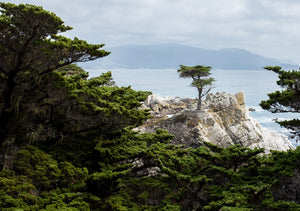
How To Use
Cypress have unique characteristics that make them suitable for various uses in the landscape. Here are some recommendations for using cypress trees in your outdoor space:
Specimen Tree: Cypress can make a stunning focal point in the landscape due to their tall, columnar shape and evergreen foliage. Plant a single tree to showcase its beauty and unique character.
Privacy Screen: Cypress can be planted in a row to create a natural privacy screen or windbreak. Their dense foliage and height make them an excellent choice for this purpose.
Wildlife Habitat: Cypress are known to provide a habitat for wildlife, especially birds and other animals that nest in their branches. Plant them to attract wildlife to your garden and enjoy watching them interact with their natural environment.
Windbreak: Cypress are adaptable to a range of environmental conditions, including wind and salt spray. Use them to protect your garden or home from strong winds and create a sheltered outdoor space.
In addition, cypress wood is highly valued for its durability and strength. It has been used for a variety of purposes such as building homes, furniture, and boats. Cypress oil, obtained from the tree's needles and bark, is also used in perfumes, soaps, and other cosmetics.
When selecting cypress for your landscape, choose a species that is suitable for your growing conditions and space. Cypress prefer well-drained soil and full sun exposure, but they can adapt to a range of soil types and growing conditions. With proper care and maintenance, cypress can add timeless beauty and function to any outdoor space.
Conclusion
Cypress are a wonderful addition to any landscape, offering a combination of beauty, durability, and versatility. Whether planted as a specimen tree or used to create a natural privacy screen, cypress can provide years of enjoyment and add timeless charm to any outdoor space. By selecting a suitable species and planting in well-drained soil with full sun exposure, you can enjoy their graceful form and evergreen foliage for years to come. With their fragrant wood and tolerance for a range of soil types and growing conditions, cypress trees are a popular choice for a variety of formal and informal gardens.
Whether planted in urban or rural settings, cypress can enhance the beauty of any outdoor space and provide a natural habitat for wildlife. By providing moderate watering, occasional pruning, and fertilization when necessary, you can ensure your cypress remain healthy and beautiful for many years to come.
By following these basic care guidelines, you can create a stunning landscape that will bring you joy for generations to come.

